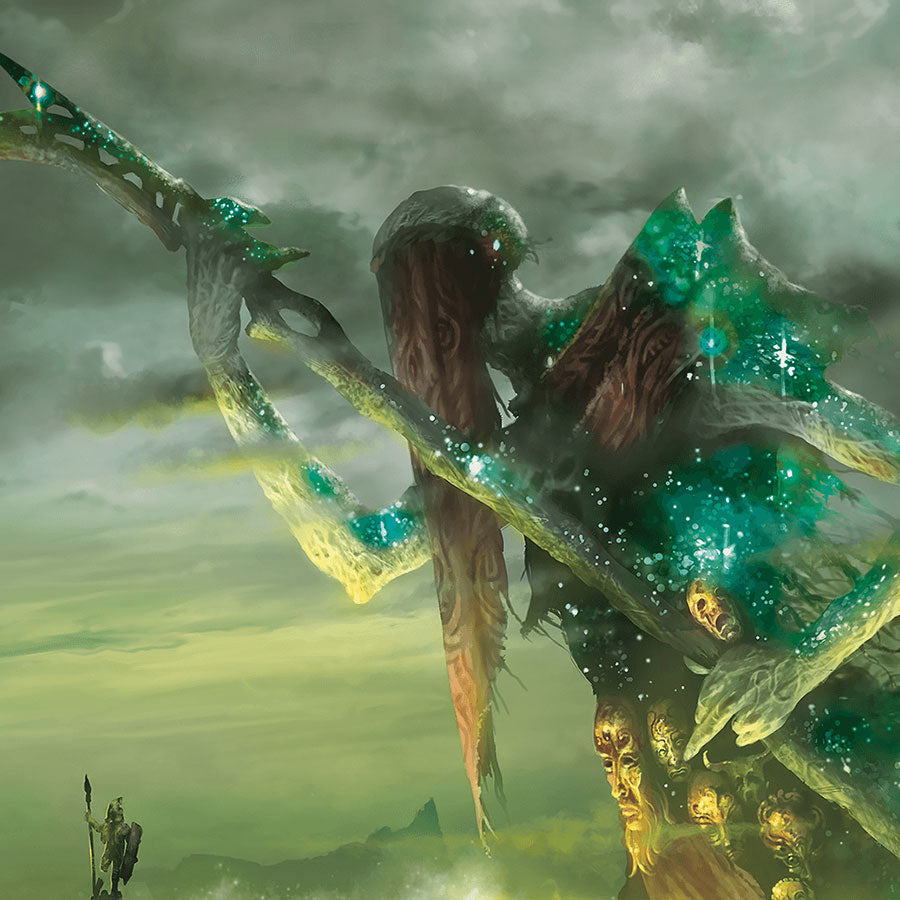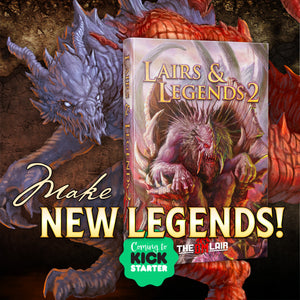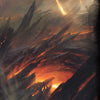The Forgotten D&D Rule that Changes Everything

Written by Luke Hart
Contributions by Harmony Ginger
Credit to Jeffro Johnson for his work on explaining 1:1 time |
So, it’s nearing the end of a game session, and my D&D players are in the middle of a dungeon. They just beat back several waves of bugbears, but they know that the beasties are regrouping and reading for another assault.
Fortunately, my players have fortified their position and are ready. However, 8:45 and the game session ends at 9:00. But that’s okay because we all know that we’ll just hit pause and pick things up right where we left off in the next game session.
But what if we didn’t? What if time kept going? What if the two weeks of real time that will pass before our next game session ALSO PASSES in game? What will happen to their characters? Will their fortified position hold? Will the bugbears overwhelm them? And who gets to decide that? The players, or the game master?
Hello folks, welcome to the DM Lair! I’m Luke Hart, and on this channel, I share my nearly 30 years of game master experience so that you can run amazing games that your players will love.
And today we’re talking about a forgotten old-school method of gameplay commonly referred to as 1:1 Timekeeping. The concept may seem foreign to you at first, especially if you’re new to the game, and may even seem like it could never possible work. However, I think that if you give it a try, you’ll find an amazing NEW way to run campaigns that may revitalize and breath fresh new life into your games.
By the way, are you a NEW GAME MASTER feeling a bit overwhelmed by everything involved with running a role-playing game? If so, the Secret Art of Game Mastery can help. Get over 100 years of GM experience distilled into practical, easy-to-read advice.
Watch or listen to this article by clicking the video below.
Basic Concept
Now, the concept of 1:1 timekeeping in Dungeons & Dragons was originally introduced by Gary Gygax, the co-creator of D&D. He used it in the early days of the game, particularly in his Greyhawk campaign. In Dungeon Master’s Guide (1979), Gygax emphasized that timekeeping was essential for maintaining a persistent world, especially in campaigns where multiple players or groups were involved.
The idea was that in-game time should progress at the same rate as real-world time, ensuring that the game world remained dynamic and that players had to plan their activities carefully. This system was especially useful in play-by-mail games, West Marches campaigns, and mega-dungeons, where different adventuring parties explored the same shared world.
Gygax saw 1:1 timekeeping as a way to prevent players from dominating the game world through endless adventuring while others were absent. It also allowed for organic world-building, where factions, NPCs, and events continued to evolve even when players weren’t actively playing.
Benefits
1:1 timekeeping offers SEVEN distinct gameplay benefits that make the world feel more immersive, strategic, and alive.
1. It Creates a Living, Breathing World
Since the world doesn’t pause when players aren’t around. NPCs continue their lives, rival adventurers may loot dungeons, and factions progress their goals. This makes the game world feel dynamic and reactive rather than static. In fact, you’ll find that the game can become more about the world and less about the characters…which many players discover they thoroughly enjoy.
2. It Encourages Strategic Time Management
Time becomes another resource for the players to manage and it's as valuable as gold. Thus, players must think carefully about travel, resting, and downtime. Since the players always know how much time they have to work with, they will consider if they would like to train to level, craft, travel, investigate, or gamble during their downtime.
Do they spend two weeks crafting a magic item while another group explores the dungeon they wanted to loot? Do they travel to the next adventure location? Do they spend time leveling up or gathering information about the monsters in the sewers?
3. It Makes Downtime Meaningful
1:1 timekeeping gives real weight to downtime activities like research, training, crafting, and running businesses, which typically happen between every game session. If a wizard needs a month to copy spells into their spellbook, that’s an actual month in the real world.
Furthermore, running downtime like this allows characters to work independently with a fog of war between them. For example, the rogue may show up to a session with a trinket that belongs to a noble and none of the other players will know why he has it or if he could be a wanted criminal.
4. It Allows Player Participation in a Shared World
1:1 timekeeping allows multiple groups to play in the world and even affect each other. These separate groups may even have different GMs from group to group, but keeping each group on the same time scale makes them compatible and able to exist in the same world.
Furthermore, in games like this, or West Marches-style games, no single group can dominate the world by adventuring constantly. Since every player experiences time equally, this method ensures fairness and prevents power imbalances. So, if you’re multiple groups in the same shared world, this is the way to do it.
5. It Reinforces Consequences and Urgency
If the villain’s plan is unfolding over the next three weeks, that MEANS SOMETHING in 1:1 timekeeping. If players ignore it, the world moves forward without them. This adds tension and realism to in-game events.
6. It Makes Resource Management Matter
Food, supplies, and healing time become more important. If a dungeon crawl is stretched over several real-world weeks, rations and torches need to be accounted for. Imagine ending your session in the middle of a dungeon where the party decides to hole up, two weeks pass, but it turns out they didn’t have enough rations, or torches, or water. Long-term wounds or magical curses also take time to heal.
7. It Adds a Layer of Realism
The passage of real-world time maps to seasonal changes, economic shifts, and character aging. It prevents characters from cramming years' worth of experiences into a few weeks of in-game time. You know what I mean. This is when the characters level from 1-10 in two weeks of game time.
Since seasonal events and natural occurrences like moon cycles will happen at the same time in-game as they do out of game, this means that your yearly Christmas game could easily fit into your consistent world.
8. It Accounts for Missing Players
1:1 timekeeping makes handling players who can’t make a game session quite easy. Since the group is heavily encouraged to not end in the middle of a dungeon, but instead in town, if a player can’t make a game session, their character simply stays in town for that game session.
Overall, 1:1 timekeeping transforms a campaign into a persistent, evolving world rather than a series of disconnected adventures. It forces players to engage with the world in a different, more thoughtful way.
How It Works
At a high level, 1:1 timekeeping is simple. However much time passes in the real world also passes in the game world. Now, that is the ultra strict way to run it, and GMs sometimes don’t follow it exactly. To help explain how it works, and example probably works best.
Your adventure group is know as the Deep Delvers. Before the game session begins, you tell your GM that you’re traveling to the Tomb of Saint Elnore where an ancient evil is rumored to have awakened. Your aim is to be at the entrance of the tomb for the start of the next game session.
Game session comes, and you begin to delve into the tomb. You’re beating beasties, taking their loot, and discovering more about this “ancient evil.” Then there’s only 15 minutes left in the game session, so you decide to retreat from the tomb and hole up in a nearby cave. Then the game session ends and you all go home.
However, time doesn’t stop. Two weeks will pass between then and your next game session. That means two weeks pass in the game as well.
So, at the beginning of the next game session, the game master asks you all what you were doing during those two weeks. Perhaps you traveled back to town. Maybe you researched more about the monsters you had run into in the dungeon. Some of you caroused. The rogue worked on building his thieves guild. The fighter was pit fighting. So on and so forth. So, the beginning of the game session is spent resolving those two weeks.
Then again, maybe the group resolves those two weeks’ worth of events AWAY from the table during the two weeks they aren’t together gaming. This could be handled on Discord or a similar platform, and likely each player has their own separate chat with the GM so that they can do things unbeknownst to the other players if they wish. With this method, when the group comes back to the game table at their next session, they could have traveled back to the Tomb of Saint Elnore where they begin delving once again.
Either way, once the group gets back into the tomb, they discover that room after room they didn’t explore before has been cleaned out. There are rotting carcasses of monsters and everything has been looted. Another group must have been here in the last two weeks while they were in town!
In fact, they discover that the entire tomb has been cleared out, the loot is gone, and the ancient evil has been dealt with. Someone else stole their dungeon! So, they head back to town with an axe to grind and resolve to find out who that other group was…and get their loot back.
And that’s the main idea in a nutshell. But I bet you have questions, so let’s go!
What happens if the group stays in the dungeon between game sessions?
If a group is in the middle of a dungeon and two real-world weeks pass before they resume play, the game master has a few ways to handle this:
Retreat & Downtime. A common approach is to require characters to return to a safe location before the session ends. If they don’t, they risk being lost, trapped, or suffering consequences for staying in a dangerous place. Players might return to town, restock supplies, or spend downtime before the next session.
Time Passes Without Them. If the group left their characters in the dungeon, then two in-game weeks have passed. The GM decides what happens during that time: Do monsters reinforce their positions? Do other adventurers plunder the area? Does food and water become an issue? This enforces the idea that the world moves on, even when players aren't actively participating.
NPC Intervention. The GM might narrate how the characters got out of the dungeon, either through their own efforts or via a rescue, and impose logical consequences. Maybe they were forced to flee, leaving treasure behind, or they got captured and must now escape.
Player Responsibility. In strict 1:1 campaigns, players must schedule their adventures carefully to avoid being stranded. If they knowingly delve into a dungeon without securing a way out before the session ends, they accept the risks of what happens during the downtime.
Must 1:1 timekeeping be strictly followed?
Of course not. It’s your game. You follow or change the rules as needed. A minute-by-minute accounting of time—for instance, if the group travels for half a day, you must spend the same amount of time at the table waiting—doesn’t need to be followed. In fact, that’s a great example of when you wouldn’t want to follow 1:1 timekeeping; just speed time up; otherwise, you’ll sit there bored and that makes zero sense.
Furthermore, you COULD pause the game mid-adventure or mid-dungeon if you desire. What you do here is just pick up the dungeon next week, finish it out, and then when the players head back to town they have EXTRA downtime to use to catch up with the real-time clock.
Tips for Implementing 1:1 Timekeeping
First, use a planner, like the ones people use for school. A calendar where you can write down the date things will be finished or occur is invaluable. I suggest an online calendar that all players can see and reference, if not actually edit.
Next, you don’t need to spend a bunch of time in between sessions on downtime. Some of us are busy and that’s just not feasible. So, it’s okay to just quickly adjudicate at the beginning of a game session. Just be sure to ask people at the beginning or end of a game if they want their activities to be secret; if they do, they’ll need to message it to you, or go with you into another room to resolve. By the way, there is nothing more suspenseful for the REST of the players than the GM and one player going off into a room to discuss something. It’s great.
Like any other new mechanic you may use, I always suggest trying it out EXACTLY as written so you can experience it in its strictest, truest form. Do that for awhile before you attempt to tweak it. It will be a change from what you normally do, so it will feel odd, and you’ll be tempted to change it right out of the gate so it’s not so alien—however, that’d be doing your group a disservice.
Remember, like any way of running the game, this may not be for everyone. However, if you never give it a try, you’ll never know.
100 Years of GM Experience at Your Fingertips!
Are you a NEW GAME MASTER feeling a bit overwhelmed by everything involved with running a role-playing game? Are you a VETERAN GAME MASTER looking for new tips and tricks to take your games to the next level? Look no further than the Secret Art of Game Mastery.
We at the DM Lair have distilled our CENTURY of accumulated GM experience into an easy-to-read guide of practical advice that you can immediately apply to your games! We've even included our own templates–the things that we use to prepare our ACTUAL games.
Get all three books to master your game:
- The Secret Art of Game Mastery. Contains over 100 years of GM advice distilled into an easy-to-read format. It introduces and explains the tools of the trade, scheduling, playstyle, post-game notes, getting player feedback, and more.
- The Secret Art of Preparation. Brings to your fingertips the actual templates and guides that the DM Lair team uses to prepare games, Lair Magazine, and more. Designed as a three-ring binder, it's intended for you to write directly into for your entire campaign!
- The Secret Art of Notetaking. Gives you the keys to tracking your campaign from session to session just like the DM Lair team. Designed as a three-ring binder, it's intended for you to write in and keep track of your whole campaign!
With so much knowledge and experience on its pages, The Secret Art of Game Mastery is guaranteed to become an indispensable tool for all game masters, new and veteran alike. And if that isn’t enough, the information applies to all game systems and all genres!
-
Posted in
Game Master How-To Articles







